Published Nov 28, 2021
Star Trek’s Queer Fluidity is Giving Fans the Brighter Future They Deserve
Why wouldn’t queer fans feel connected to characters that made them feel included?
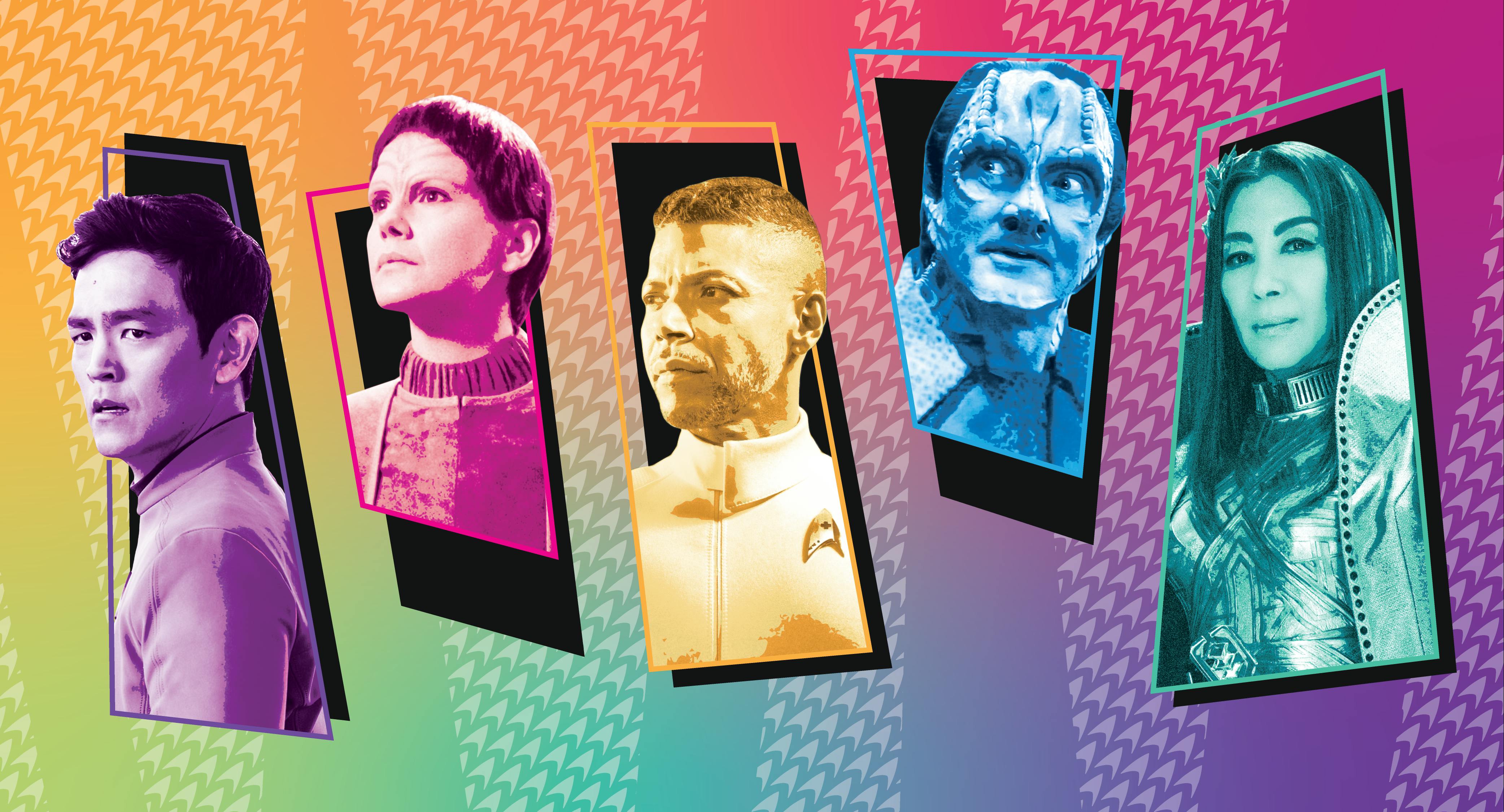
StarTrek.com
If you’re an avid Star Trek fan, you might’ve heard this question before: Star Trek’s kinda gay, right?
That’s something a good chunk of the Star Trek fandom has been asking for years, but it’s not just some slash-fiction fantasy. It speaks to a greater sexual and gender fluidity that’s been a constant presence in Star Trek for decades, and it’s been powerful enough to inspire and influence countless queer Star Trek fans.
In Andrew Robinson’s interview with That Shelf for the Deep Space Nine retrospective documentary, What We Left Behind, he described his character, Garak’s, sexuality as, “something that can happen with anyone. And there’s Doctor Bashir... who’s a good looking young man, and I thought, it’s sexual attraction that brings [Garak] to Doctor Bashir as well as the subterfuge of being a spy.”
Garak’s only canon romantic pairing in the show was with Ziyal, a fellow Cardassian, but Robinson saw and played the character very differently. He understood this unilateral fluidity in Garak. Robinson’s even been known to call Garak, “omni-sexual”.
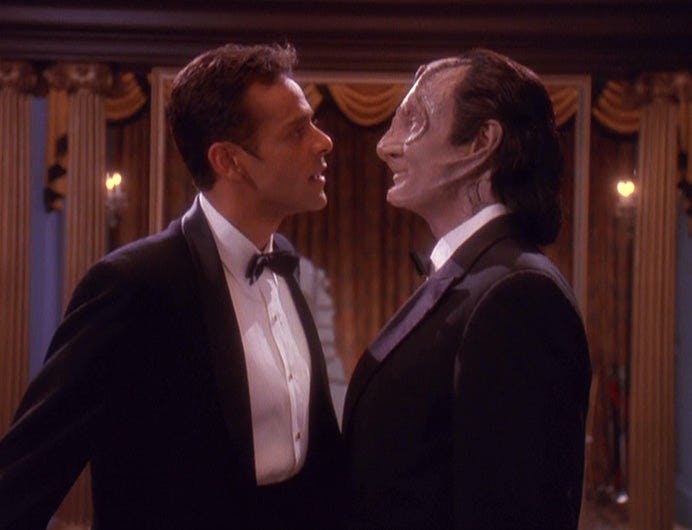
StarTrek.com
Despite the fact that Star Trek didn’t feature out members of the LGBT+ community until more recent years, sexual and gender fluidity has always been a staple of the series. That’s including one-off episode species like the non-binary J’Naii to main characters like Jadzia Dax, whose symbiont made her gender and sexuality much more transient. Even when it comes to Trek’s in-universe fashion and culture, everything is much more gender neutral, opening up an entire galaxy for queer fans to see a place for themselves, no matter where on the spectrum they land.
Fans were drawn to Trek’s subtle nods to LGBT+ representation, which was unlike few other franchises. After all, Star Trek didn’t have “very special episodes” about the queer community. Instead, Roddenberry created a diverse galaxy where it felt like people of the LGBT+ community might be able to live, accepted as they are. They didn’t need to be explained, they just were diverse people and cultures with their own stories.
This has led to collected communities of fans that revel in the queerness and the futuristic representation that Trek gave them.
Examples of these collected communities include Tumblr tags and Discord servers, where queer fans collect to commune and enjoy Trek from their queer perspective. These communities celebrate queer episodes like “Rejoined” and “The Outcast”, as well as the various characters they identify with.
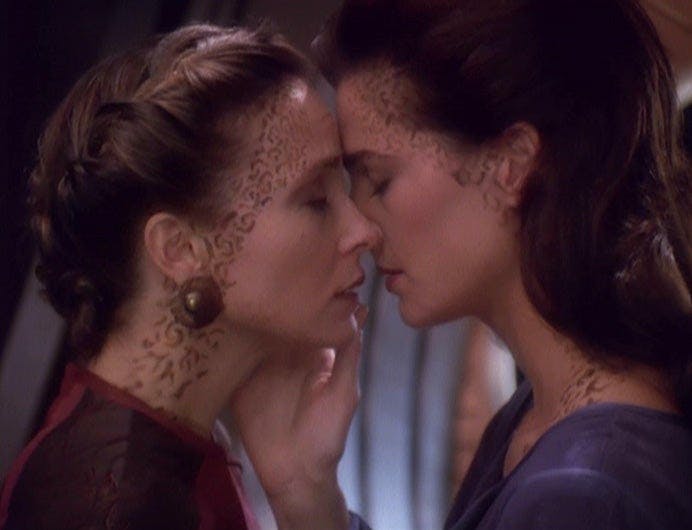
StarTrek.com
The truth is that, before the past handful of years, queer people simply didn’t see themselves that often on TV or in movies. And that’s just talking about the better-known identities; others were practically mythic. Star Trek is different because of its open fluidity, though. There is a lot of room for interpretation in which fans can see themselves.
Hannah, an asexual member of a queer-centered Star Trek Discord, describes her view on Star Trek representation: “As an asexual person, representation in media can often be hard to come by... The character that I relate to most when it comes to romance is Odo. His gripe with “humanoids’ obsession with mating rituals”, while funny at first, is often what it feels like being asexual”.
Hannah goes on to dissect his relationship with Major Kira Nerys, saying, “It’s only after many years of close friendship with Kira that he becomes romantically involved with her. Seeing that sort of romantic representation on screen really meant a lot to me.”
This sort of “representation as interpretation” is hardly a new phenomenon in Trek. It all began with Captain Kirk and Mr. Spock themselves. “Not in front of the Klingons”, indeed.
Few other series in the ‘60s showed a male friendship that was affectionate and tender without someone turning it into a taboo or a joke. No wonder the LGBT+ community latched onto Spock and Kirk as queer icons. Whether they were gay or not, they had an openness to their identities that made a significant impact during a time when queer people openly protested against unlawful oppression and traditional gender roles.
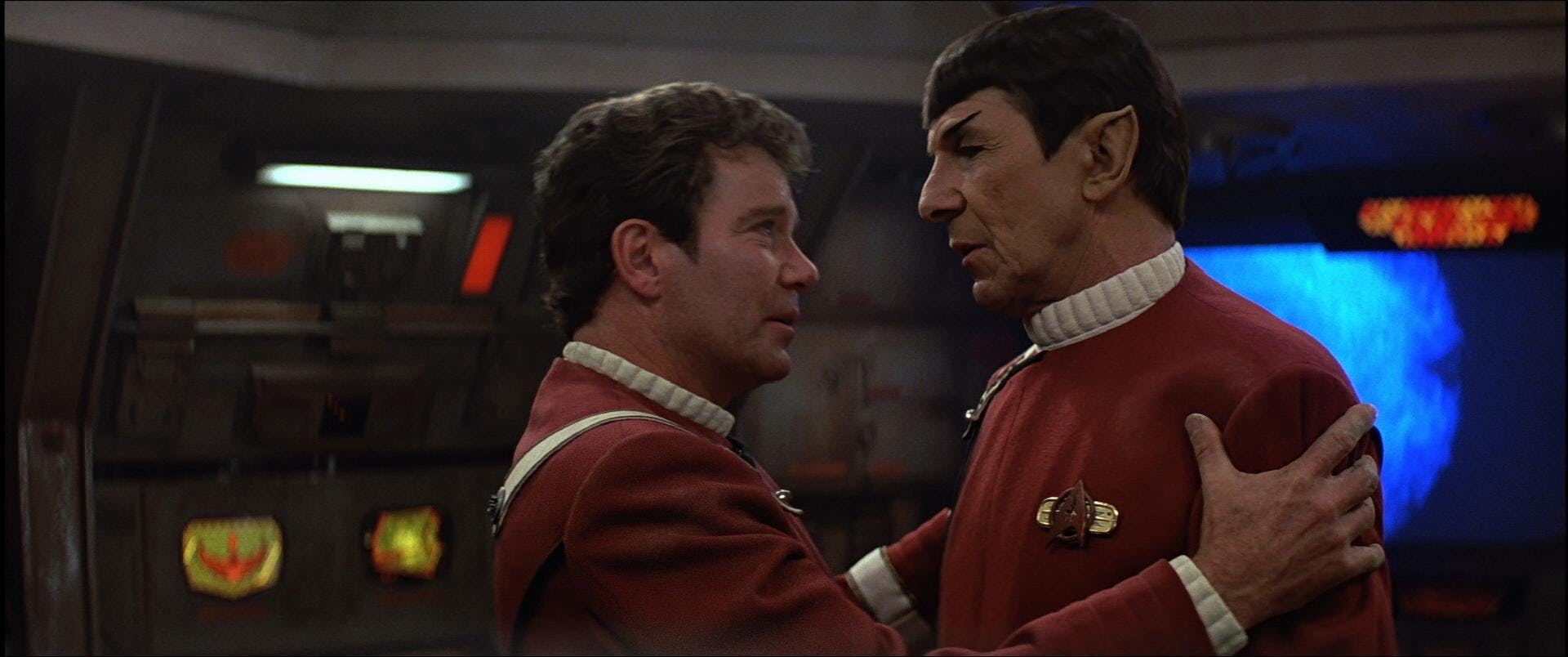
StarTrek.com
One specific example of Kirk and Spock’s influence is in the Star Trek fanzine, Grup (named after the term used for “grown-ups' ' in TOS’ season one episode, “Miri”). In 1972, Grup started to circulate, exploring more “grown-up” stories about the fandom’s favorite starship. In its third issue, Grup published one of the first popularized narratives of Spock and Kirk as a romantic couple, “A Fragment Out of Time”.
The tenderness of their bond, whether intentional or not, was a rare outlet where queer people could see something that looked like the romances they themselves experienced. Spock and Kirk’s relationship inevitably became something precious and important to them.
The queer side of Star Trek fandom is full of stories like that: looking up to Riker as a bisexual icon, supporting the romantic subtext of Garak and Dr. Bashir’s relationship, relating to Seven of Nine awkwardly trying to fit into the mold of heterosexuality.
That kind of representation matters deeply to fans questioning their own gender or sexual identities: getting to be themselves, and having people accept them as such.
Why wouldn’t queer fans feel connected to characters that made them feel that way?
And these assumptions are not just fan conjecture. Andrew Robinson (Garak), Alexander Siddig (Dr. Julian Bashir), Terry Farrell (Jadzia Dax), Jonathan Frakes (William Riker), and many other Star Trek actors have all discussed their perception of their characters’ sexuality being something much more fluid. Even Gene Roddenberry himself planned to add a gay character to TNG’s main cast in the show’s fifth season. That is, until his untimely death put his progressive idea on ice.
But Roddenberry’s death didn’t stop Star Trek’s queer representation from being as important as it is. After all, most other queer portrayals in entertainment are based in tragic history or the complex present. Star Trek, in itself, is a vision of a better future. No matter how much war they face or enemies they have to outsmart, no Trek character even bats an eye at the concept of complex sexuality. That is the kind of future the queer community dreams of, one where they can be themselves, fearless and supported.
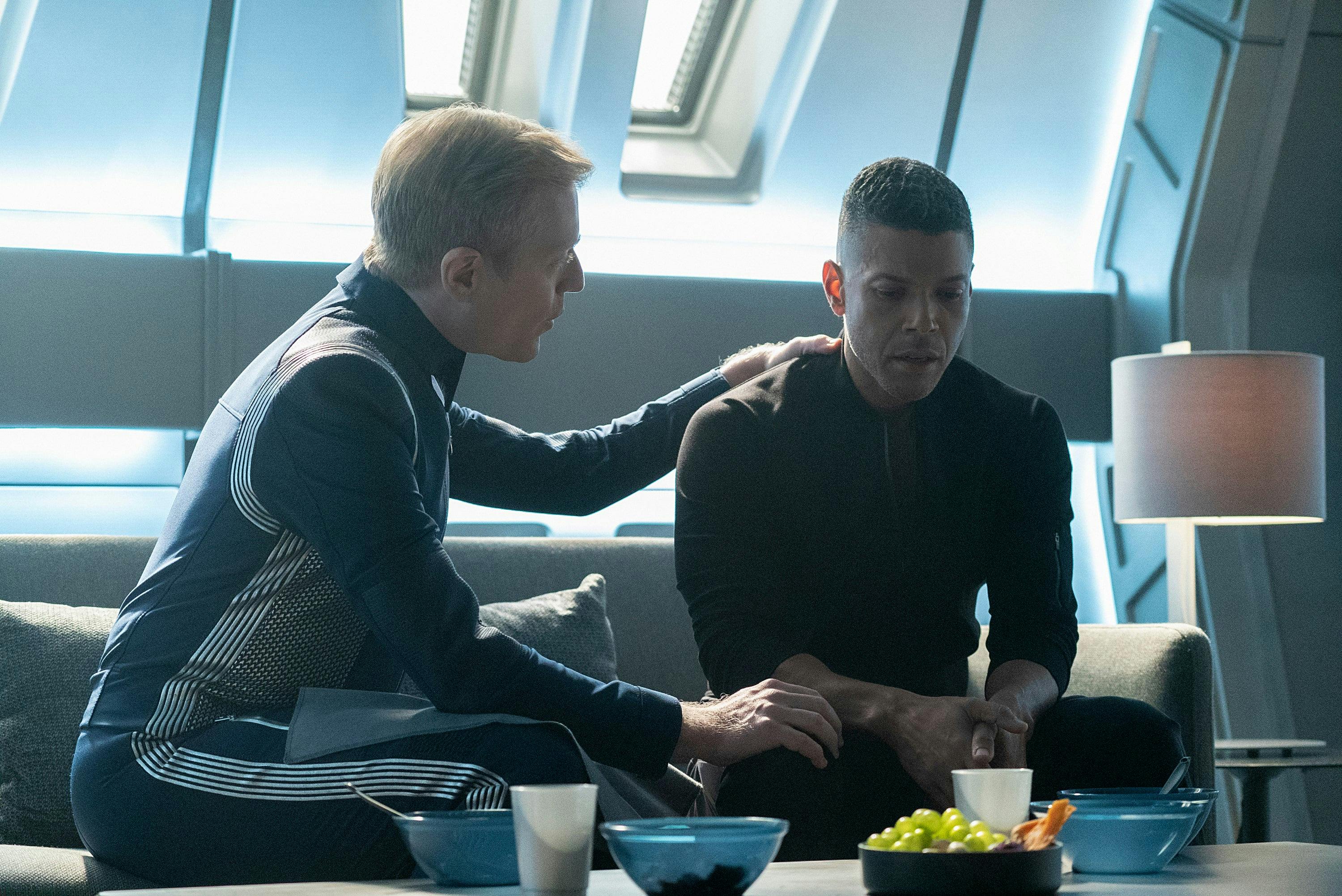
StarTrek.com
Nowadays, Star Trek is a lot more open about its queer representation. In the 2016 film, Star Trek Beyond, Hikaru Sulu was revealed as the first openly gay Trek character, with a husband and daughter. In Star Trek: Discovery, Emperor Georgiou is pansexual, Paul Stamets and Hugh Culber are an influential gay couple running the engineering and medical departments, and Michael Burnham (in name and character) is seen by many queer fans as very gender-fluid, even if she uses she/her pronouns.
To see these characters, past and present, be loved and valued in their work and personal relationships is a detail that has changed many queer lives for the better. It turns Star Trek into a rare haven where members of the LGBTQ+ community can see a future for themselves that is even brighter and more inclusive than they could have ever dreamed. Star Trek’s lack of explicit queerness in its first decades can’t take away the implications of its own inclusive future.
A Timeline Through the Star Trek Universe
Stephanie Roehler (they/she/he) is a freelancer who loves to write about video games, books, movies, TV shows, comics, and especially Star Trek.
Star Trek: Discovery Seasons 1-4 are currently streaming exclusively on Paramount+ in the U.S., the U.K., Switzerland, South Korea, Latin America, Germany, France, Italy, Australia, and Austria. Seasons 2 and 3 are also available on the Pluto TV Star Trek channel in Switzerland, Germany, and Austria. In Canada, it airs on Bell Media's CTV Sci-Fi Channel and streams on Crave. Star Trek: Discovery is distributed by Paramount Global Content Distribution.
Stay tuned to StarTrek.com for more details! And be sure to follow @StarTrek on Facebook, Twitter, and Instagram.

